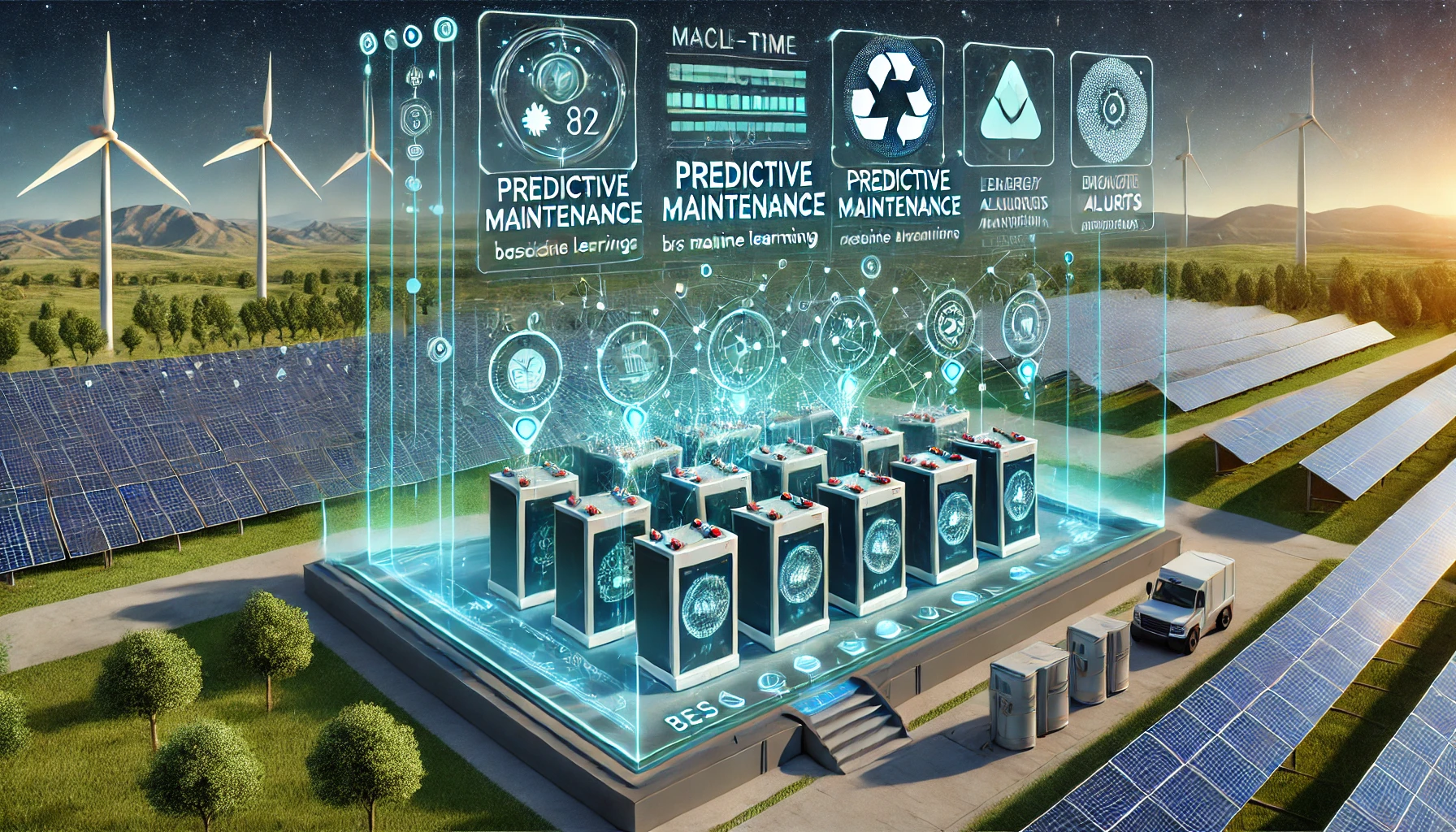Introduction
The electric vehicle (EV) sector is advancing rapidly, showcasing a significant shift in the automotive industry towards sustainability. This evolution is not only an engineering feat but also highlights the effectiveness of advanced technologies such as GIS for EV. Geographic Information Systems (GIS), along with Global Positioning Systems (GPS) and remote sensing, are crucial in enhancing the growth and efficiency of EVs. GIS for EV plays an essential role in the strategic planning, development, and optimization of EV infrastructures, including the deployment of charging stations and the management of energy systems.
As we delve into this discussion, it’s essential to understand how geospatial technology integrates into the EV landscape. By harnessing data related to geographical locations and environments, this technology provides invaluable insights that drive smarter decision-making and strategic planning. The symbiosis between geospatial technology and the EV sector is not just enhancing operational efficiencies but is also paving the way for future innovations that could redefine mobility.
In this blog, we will explore the various dimensions of geospatial technology within the EV industry, detailing how it influences everything from the placement of charging stations to consumer behavior and battery management. Whether you are a stakeholder in the automotive industry, an environmental advocate, or simply an enthusiast of technological innovation, understanding the role of geospatial solutions in the burgeoning EV market is crucial for grasping the future of transportation.
The EV Market Overview
The electric vehicle market is experiencing a surge that is reshaping the automotive landscape globally. As of the latest reports, millions of EVs are on the roads, with sales projected to rise sharply over the next decade. This growth is propelled by several factors including environmental concerns, technological advancements, government incentives, and changing consumer preferences.
Key players in the market range from established automotive giants pivoting towards electric models to innovative startups that are rethinking vehicle technology from the ground up. Companies like Tesla have become synonymous with the EV revolution, but traditional manufacturers like Volkswagen and General Motors are also making significant inroads with extensive plans to electrify their fleets.
The rise of the EV market is not uniform across the globe. While countries like Norway and China lead with the highest penetration of EVs, others are gradually catching up, driven by regulatory changes and the development of necessary infrastructure. The landscape of the EV market is a complex tapestry of technology, policy, and consumer behavior, all interwoven with the capabilities of geospatial technology to address challenges and seize opportunities.
Geospatial Technology Explained
At its core, geospatial technology involves the collection, analysis, and visualization of data that is linked to specific geographical locations. This encompasses a broad range of tools and techniques:
- Geographic Information Systems (GIS): GIS are designed to store, manipulate, and manage all types of geographical data. In the context of the EV industry, GIS can be used to analyze spatial relationships and patterns that impact where EV charging stations should be located or how traffic flow affects energy consumption.
- Global Positioning Systems (GPS): GPS technology is crucial for real-time location tracking, which is integral not just for navigation but also for advanced features like autonomous driving and fleet management in EVs.
- Remote Sensing: This involves the acquisition of information about an object or phenomenon without making physical contact, typically through satellite or aerial imagery. Remote sensing can help in monitoring environmental changes that might affect EV usage or in planning routes that optimize battery usage.
Together, these technologies provide a robust framework for making informed decisions that are critical for the expansion and integration of EVs into our daily lives. By understanding terrain, weather patterns, urban layouts, and human behaviors, stakeholders can implement solutions that are not only innovative but also sustainable and efficient.
This overview sets the stage for deeper exploration into the specific applications of geospatial technology in the EV sector. We will continue in the next sections by examining these applications in detail, along with real-world case studies and an analysis of the challenges and future prospects.
Applications of Geospatial Technology in EVs
Geospatial technology significantly enhances several aspects of the electric vehicle (EV) ecosystem. Here, we will explore four critical applications that are transforming the EV sector through the strategic use of geospatial data.
Site Selection for Charging Stations
One of the most crucial factors for the adoption and convenience of electric vehicles is the availability of charging stations. Geospatial technology aids in identifying strategic locations for these stations by analyzing a myriad of data points including traffic patterns, demographic profiles, proximity to key amenities, and existing electrical infrastructure. GIS tools can overlay these data layers to pinpoint optimal locations that maximize usage and accessibility while minimizing costs and logistical challenges. For instance, charging stations placed at busy intersections, shopping centers, or within dense urban areas ensure that they meet actual commuter needs and support the broader adoption of EVs.
Battery Optimization and Management
Battery life and efficiency are at the heart of EV technology. Geospatial data can be leveraged to optimize battery use through route optimization that considers factors like topography, road conditions, and weather patterns. For example, GPS and GIS can help create dynamic routing algorithms that adjust in real-time to conserve battery life, avoiding areas with heavy traffic congestion or steep inclines that require more power. Additionally, remote sensing data can predict environmental conditions that may affect battery performance, enabling proactive management and maintenance.
Infrastructure Planning and Development
As EVs continue to integrate into the urban fabric, city planners and engineers use geospatial analysis to design more efficient transportation infrastructures, such as dedicated EV lanes or priority areas for EV parking. This planning is based on analyzing current traffic flows, future urban development plans, and expected growth in EV usage. By forecasting these needs, cities can develop infrastructure that not only supports the current population of EVs but is also scalable for future demands.
Customer Behavior Analysis
Understanding how, when, and where consumers use their EVs is vital for tailoring products and services to fit the market. Geospatial technology helps companies analyze patterns in consumer behavior, such as preferred charging times and locations, frequency of long trips, and typical driving routes. This information can guide marketing strategies, influence the placement of new charging stations, and even impact the development of new EV models to better meet consumer needs.
Case Studies
To illustrate the impact of geospatial technology in the EV sector, let’s examine a couple of case studies that highlight successful implementations.
Case Study 1: Tesla’s Supercharger Network
Tesla’s approach to building its Supercharger network is a prime example of effective use of geospatial technology. By analyzing travel patterns and vehicle data from their fleet, Tesla has strategically placed Superchargers along major highways and within cities to meet driver demand and minimize range anxiety. This network not only enhances convenience for Tesla owners but also encourages longer trips, increasing the practicality and appeal of EV travel.
Case Study 2: Electrify America
Electrify America, a subsidiary of Volkswagen Group of America, uses GIS and demographic analysis to locate charging stations in areas that not only have high current EV demand but also in locations that are underserved yet have high potential for EV adoption. This proactive approach helps in fostering new markets for EVs while also ensuring that existing EV owners have reliable access to charging infrastructure.
Challenges and Limitations
While geospatial technology offers substantial benefits to the EV sector, there are challenges and limitations that must be addressed. Data accuracy and privacy concerns are significant issues, as the effectiveness of geospatial applications heavily relies on the quality and granularity of the data collected. Technical challenges also arise in integrating various data systems and ensuring that geospatial tools can operate at the required scale and complexity.
Additionally, there are logistical challenges in deploying and maintaining an expansive infrastructure network, especially in remote or less developed areas where data might be sparse or outdated. Ethical considerations must also be managed, particularly regarding data privacy and the potential for surveillance.
Future Prospects and Innovations
Looking ahead, the integration of geospatial technology in the EV sector is poised for further growth and innovation. Advances in AI and machine learning are expected to enhance the analytical capabilities of GIS, making predictive models even more accurate and dynamic. Moreover, as satellite imaging technology improves and becomes more accessible, remote sensing will play a larger role in real-time data gathering, influencing everything from traffic management to environmental monitoring.
Emerging technologies such as V2X (vehicle-to-everything) communications will also benefit from geospatial insights, facilitating more interconnected and intelligent transportation networks. These advancements will not only improve the functionality and efficiency of EVs but also contribute to smarter, more sustainable urban environments.
Conclusion
The synergy between geospatial technology and the electric vehicle sector is a compelling example of how targeted technological applications can drive industry-wide change. By enhancing the accuracy of decision-making, optimizing resource allocation, and improving user experiences, geospatial technology is at the forefront of the EV revolution, ensuring its growth is both sustainable and scalable. As this sector continues to evolve, the innovative use of geospatial data will undoubtedly be central to its success, paving the way for a cleaner, more efficient future in transportation.
This comprehensive exploration provides stakeholders, from industry leaders to consumers, with a clearer understanding of how integral geospatial technology is to the development and expansion of the EV sector. The future of transportation is not just electric—it’s geospatial.







